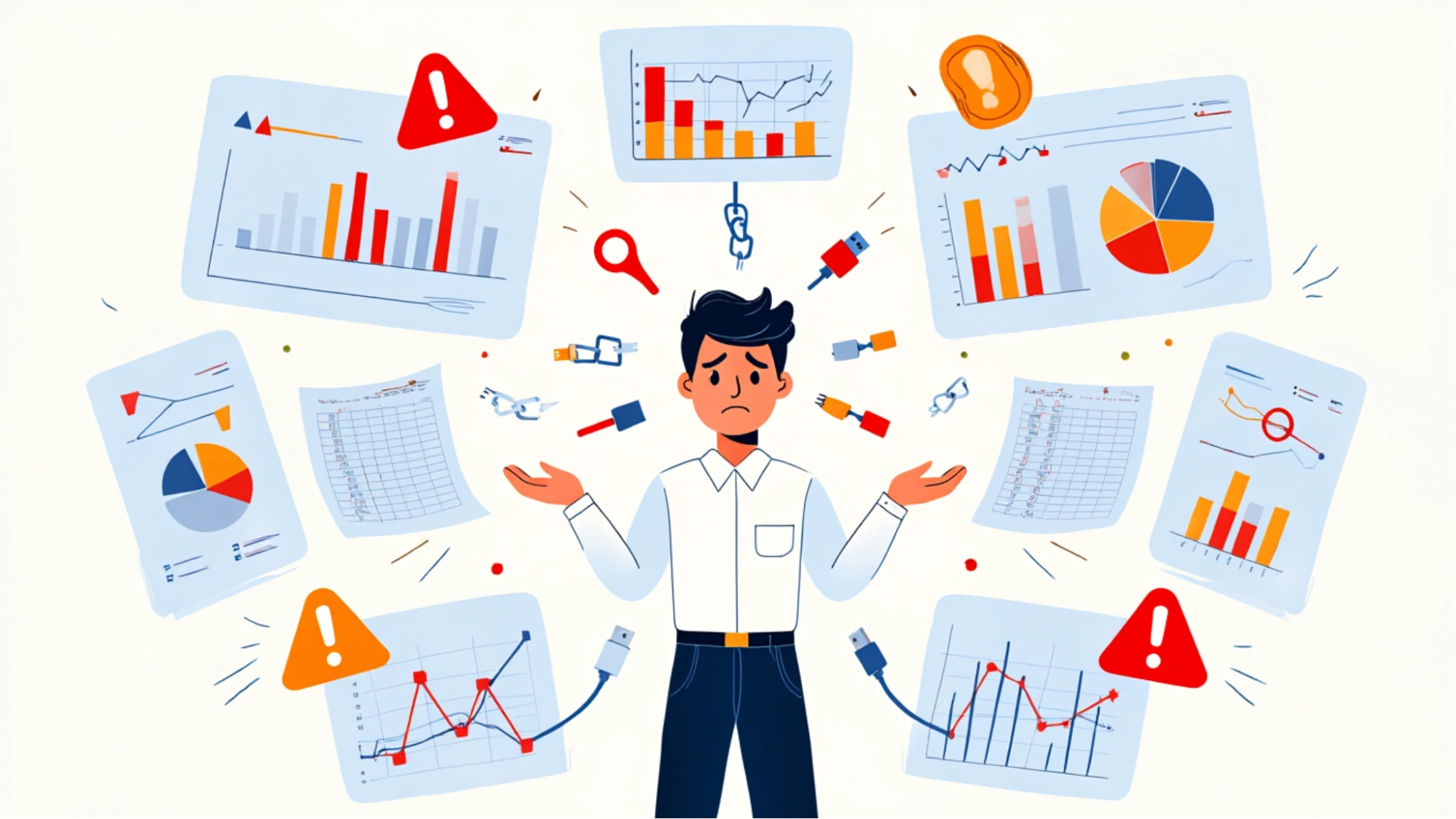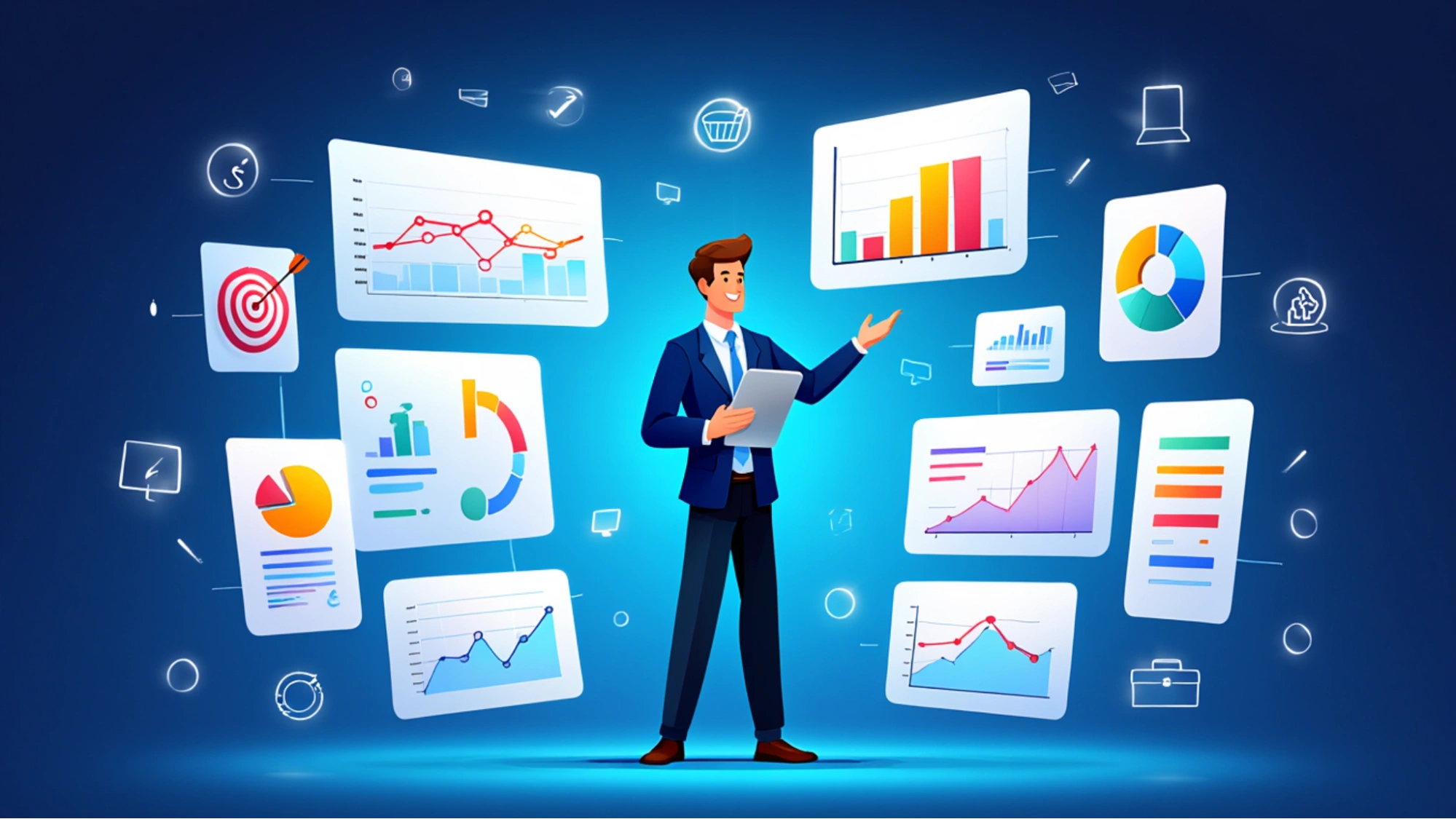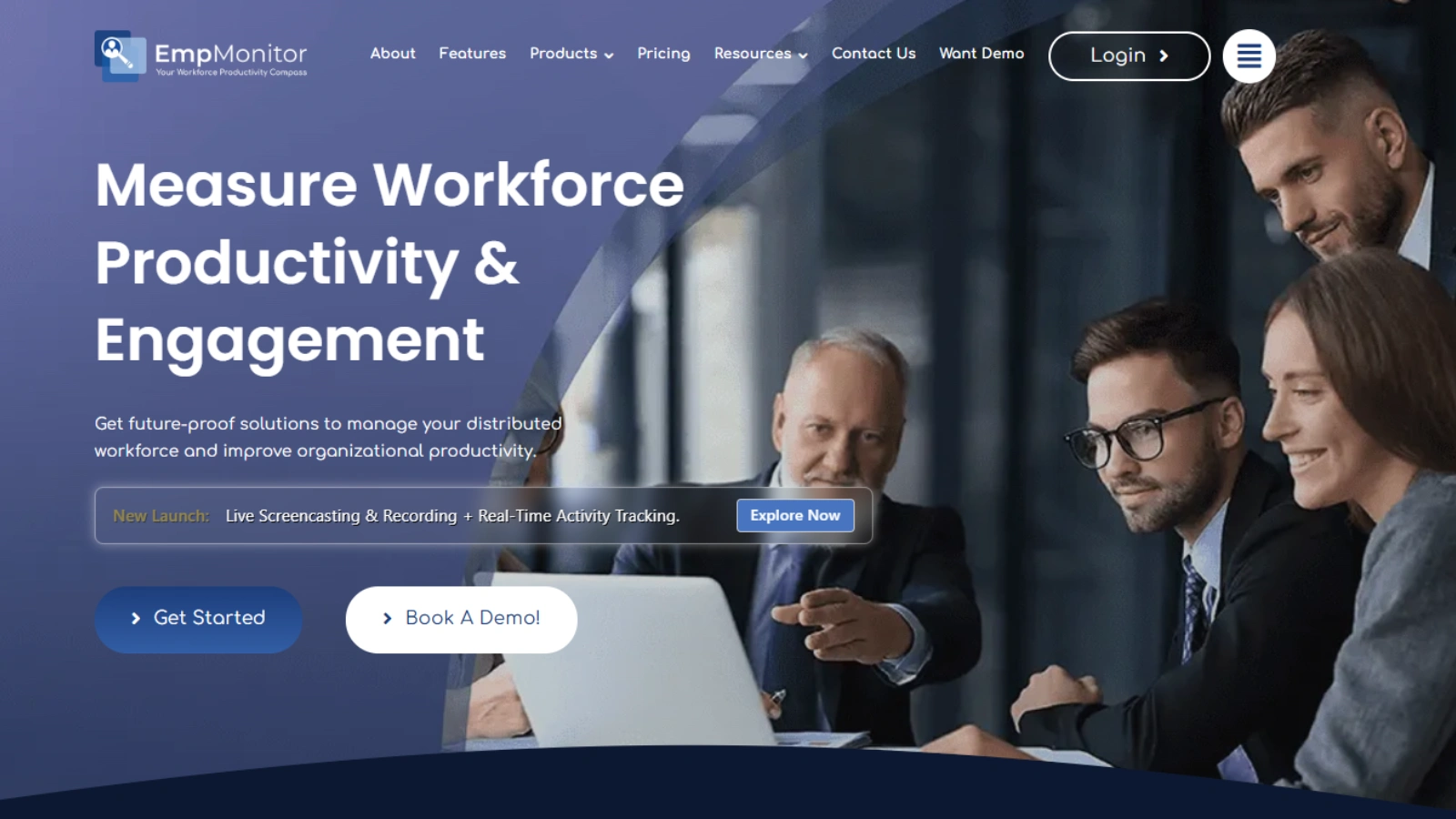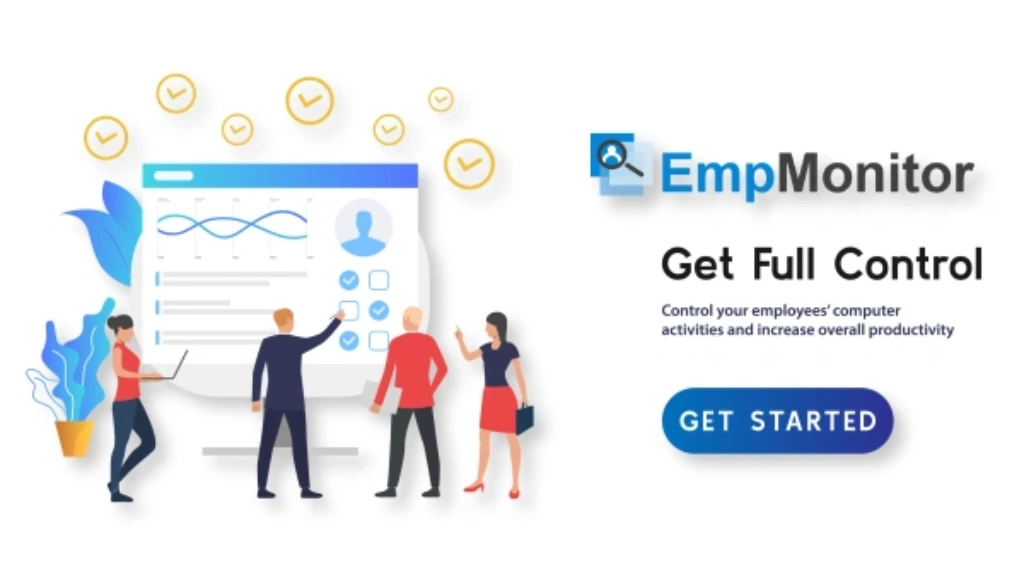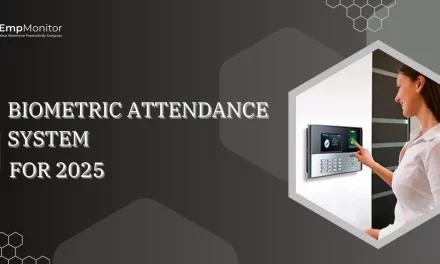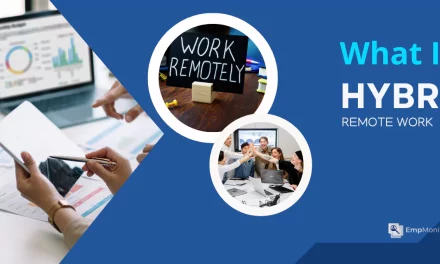Running a small business is not an easy task. One day you are managing stock, and the other day you are trying to solve a customer problem.
Most of the time, decisions come from gut feelings or experience, but that does not always work out.
Now imagine if you had a way to see ahead, to know which products will sell, which customers might leave, or how much inventory you will really need next month. That is exactly what predictive analytics can do for you.
Instead of thinking about what will work, it uses your data to spot trends and give you clear insights.
The result? Smarter decisions, no mistakes, and more growth opportunities.
In this post, we will walk you through 10 powerful reasons why predictive analytics is a must-have for small businesses, with practical examples you can start using right away.
In a hurry? Listen to the blog instead!
What Is Predictive Analytics?
Predictive analytics is a way to use your data to see what might happen in the future. Instead of guessing, it looks at past data, like sales trends, customer behaviour, or inventory changes, and helps you make smarter decisions.
Here’s how it works:
You collect your business data, apply models to find patterns, and then use those insights to forecast outcomes.
For example, you can predict which products will sell fast, which customers might stop buying, or when you will need more stock.
For small businesses, this is a game-changer. It helps you plan better, avoid mistakes, and focus on the actions that will grow your business.
Why Predictive Analytics Is Important For Small Businesses?
Predictive analytics helps you make decisions based on real data, not just instincts. You can spot trends, understand customer behaviour, and even predict problems before they happen.
With predictive analytics, small businesses can:
- Avoid overstocking or understocking products
- Run marketing campaigns that actually work
- Keep customers happy and loyal
- Save time and reduce costly mistakes
In short, it gives you the confidence to make smarter, faster decisions, so your business can grow without unnecessary risk.
10 Reasons Small Businesses Should Use Predictive Analytics
By using data to anticipate trends and outcomes, you can make smarter decisions and stay ahead of the competition. Here are 10 ways it can help your business succeed.
1. Improve Sales Forecasting
Knowing what will sell and when can make a huge difference for a small business. With predictive analytics, you can look at past sales data and spot trends. This helps you predict which products will be in demand and plan accordingly.
Instead of guessing, you will know how much stock to order, when to launch promotions, and how to meet customer needs. The result? Fewer missed sales and less wasted inventory.
2. Optimise Inventory Management
Running out of stock or having excessive inventory can harm your business. Predictive analytics helps you manage your inventory smarter. By analysing past sales, seasonal trends, and customer demand, you can know exactly what to order and when.
This means less waste, lower storage costs, and happier customers because they can always find what they need.
3. Understand and Predict Customer Behaviour
Every customer has a pattern: what they buy, when they make a purchase, and how often they return. Predictive analytics helps you spot these patterns so you can understand your customers better.
For example, you can find out which customers are likely to buy again, who might stop shopping with you, and what kind of offers will keep them engaged. This way, you can focus on building stronger relationships and improving customer loyalty.
4. Enhance Marketing ROI
Marketing can be expensive, and not every campaign delivers results. Predictive analytics helps you understand which strategies are most likely to work. By studying customer data and past campaigns, you know where to invest your time and money. It also guides you toward effective Social media ad alternatives, ensuring your budget is focused on channels that offer the highest return.
This means you can target the right audience, send the right message, and spend less on ads that don’t bring results. In short, your marketing becomes smarter and more effective.
Also Read!
5. Reduce Risks and Detect Fraud
Every business faces risks, whether it’s financial losses, late payments, or even fraud. Predictive analytics helps you spot warning signs early. By looking at past data, it can detect unusual patterns that may point to potential problems.
For example, if a customer’s payment behaviour suddenly changes, or if certain transactions don’t match normal patterns, predictive analytics can alert you before the issue grows bigger.
This means small businesses can stay one step ahead, protect their money, and avoid costly surprises.
6. Strengthen Customer Retention Strategies
Keeping existing customers is just as important as finding new ones, and often much cheaper. Predictive analytics helps you understand which customers are likely to stay and which ones might leave.
By looking at past buying habits, engagement levels, and feedback, you can spot early signs of churn. This gives you the chance to act fast, like sending a special offer, improving service, or simply reaching out at the right time.
With the right insights, you can build stronger relationships, keep customers loyal, and grow your business steadily.
7. Make Smarter Hiring and HR Decisions
Hiring the right people and keeping them motivated is key to any small business. Predictive analytics can help by looking at patterns in employee performance, turnover, and staffing needs.
For example, it can show you the best time to hire extra staff, which roles are likely to face higher turnover, or even what kind of training can improve productivity.
With these insights, small businesses can avoid over-hiring, reduce employee churn, and build a stronger, more reliable team.
8. Support Better Financial Planning
Money management is one of the toughest parts of running a small business. Predictive analytics can make this easier by helping you plan your finances with more accuracy.
By studying past income and expenses, you can forecast future cash flow, highlight upcoming costs, and even warn you about possible shortfalls. This means you can set budgets wisely, prepare for slow seasons, and avoid unpleasant surprises.
With better financial planning, you will have more control over your business and the confidence to make smarter investments.
9. Gain a Competitive Edge with Data-Driven Insights
Small businesses often compete with larger companies that have more resources. Predictive analytics levels the playing field by giving you access to powerful insights from your own data.
It helps you understand market trends, spot opportunities faster, and make smarter choices than competitors who rely only on guesswork. Even small improvements—like better inventory control, targeted marketing, or stronger customer retention—can give your business the edge it needs to stand out.
With predictive analytics, you are not just keeping up; you are staying one step ahead.
10. Improve Operational Efficiency
Running a small business means making the most of every resource, time, money, and people. Predictive analytics helps you find where delays or inefficiencies might happen and suggests smarter ways to manage operations. For example, it can forecast peak demand times so you can schedule staff accordingly or identify tasks that take longer than expected.
To make this even easier, tools like EmpMonitor can give you real-time insights into how your team works. From tracking attendance and productivity to spotting workflow bottlenecks, it helps you see where improvements are needed. When you pair this data with predictive analytics, you can plan better, cut waste, and keep your business running smoothly.
Common Mistakes to Avoid in Predictive Analytics
Predictive analytics is a powerful tool, but many small businesses make avoidable mistakes that reduce its effectiveness. By being aware of these pitfalls, you can save time, avoid errors, and get better results.
1. Relying on Incomplete or Poor-Quality Data
The insights you get are only as good as the data you use. If your sales records are inconsistent, customer information is missing, or inventory logs are inaccurate, predictions won’t be reliable. Always start by cleaning and organising your data before applying predictive analytics.
2. Ignoring Seasonal Trends or External Factors
Small businesses often overlook factors like seasonality, holidays, or market shifts. Predictive analytics works best when you include all relevant data. For example, a clothing store should consider winter and summer trends when forecasting sales.
3. Overcomplicating Models Before Mastering Basics
It’s tempting to dive into advanced predictive models right away, but small businesses can start simple. Use straightforward tools and methods first, understand your data, and gradually explore more complex analytics. This helps avoid confusion and errors.
4. Failing to Monitor and Update Predictions
Predictive analytics is not a one-time task. Markets, customers, and trends change constantly. Regularly review your forecasts, update your models, and adjust your strategies accordingly to stay accurate and relevant.
5. Ignoring Actionable Insights
Collecting data and building predictive models is useless if you don’t act on the results. Always turn insights into concrete actions—like adjusting stock levels, targeting marketing campaigns, or improving customer retention strategies.
6. Not Integrating Tools Effectively
Predictive analytics works best when it’s connected to your business systems. Tools like EmpMonitor can feed operational data into your analytics model, while sales and marketing platforms provide customer behaviour data. Without integration, predictions may miss key patterns.
By avoiding these common mistakes, small businesses can make predictive analytics more effective, save resources, and make smarter, data-driven decisions.
How Tools Like EmpMonitor Support Predictive Analytics?
Predictive analytics is all about using data to make smarter decisions.
But before you can analyse data, you need the right tools to collect and manage it. This is where software like EmpMonitor can help small businesses.
EmpMonitor is a productivity and monitoring tool that tracks employee activity, attendance, app usage, and overall work performance. It gives you detailed reports on how your team works each day.
When combined with predictive analytics, this data becomes even more powerful. For example:
- You can spot patterns in employee productivity and predict future staffing needs.
- You can identify bottlenecks in workflow before they turn into big problems.
- You can improve efficiency by knowing which tasks take up the most time.
In short, EmpMonitor helps you gather the data you need, while predictive analytics helps you turn that data into actionable insights. Together, they give small businesses a clear path to growth and efficiency.
Conclusion: The Future of Small Businesses with Predictive Analytics
Running a small business will always come with challenges, uncertain sales, changing customer needs, and limited resources. But with the right tools, these challenges don’t have to hold you back. And this is where predictive analytics becomes a game-changer.
Instead of making decisions based only on gut feelings or guessing things, predictive analytics allows you to use data to see what’s coming next.
Understanding customer behaviour, improving financial planning, or keeping your team efficient, the benefits are clear. Each of the 10 reasons we have covered shows how predictive analytics can directly support growth, save money, and reduce risks for small businesses.
Even starting a business, tools like EmpMonitor to track productivity, or simple analytics platforms for sales and marketing, can give you the data foundation you need. Over time, these insights grow into powerful predictions that guide better strategies and smarter decisions.
The future of small businesses belongs to those who embrace data. By adopting predictive analytics, you can turn uncertainty into opportunity, stay competitive in a fast-changing market, and create a strong foundation for long-term success.
So, if you have not already, now is the time to start exploring predictive analytics. Begin with the basics, build up your data, and watch how it transforms your business one smart decision at a time.
Frequently Asked Questions
Q1. What are some real-world examples of predictive analytics for small businesses?
Predictive analytics can be used to forecast sales, predict customer churn, plan seasonal inventory, detect fraud, and even improve employee scheduling. For example, a café can use it to predict busy hours and plan staff shifts more efficiently.
Q2. How do predictive analytics and traditional data analysis differ?
Traditional data analysis looks at what has already happened, while predictive analytics goes one step further—it uses past data to forecast future trends and outcomes. This helps small businesses plan ahead instead of reacting after the fact.
Q3. Can predictive analytics be integrated with existing business tools?
Yes. Many predictive analytics solutions work with existing platforms like CRM systems, sales tools, or productivity software. For instance, integrating a tool like EmpMonitor can provide team activity data that supports more accurate forecasting.
Q4. How long does it take to see results from predictive analytics?
The timeline depends on the data you already have. Some businesses see results within weeks by using their existing sales or customer data, while others may need a few months to collect enough information for accurate predictions.
Q5. What is the first step for a small business to get started with predictive analytics?
The best first step is to start collecting and organising your business data—sales records, customer details, inventory logs, and employee performance. Once you have this foundation, you can use beginner-friendly predictive analytics tools to turn that data into actionable insights.



